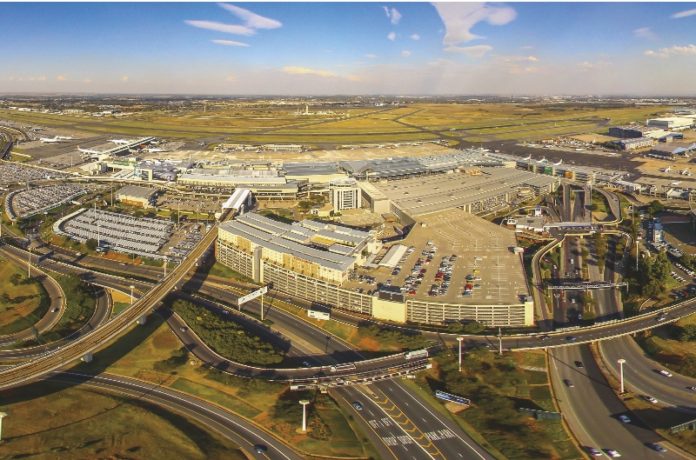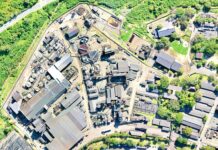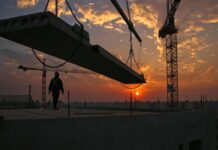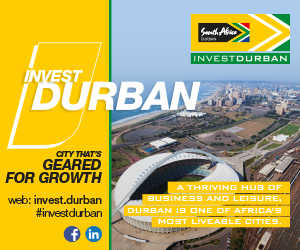Regional overview of business and investment in Gauteng, 2020/21
By John Young
One of the plans to boost Gauteng, “Growing Gauteng Together” (GGT 2030) prioritises the economy, jobs and infrastructure, with the manufacturing sector earmarked as a key driver.
Gauteng accounts for 45% of the South Africa’s manufacturing capacity, so the province is well-placed to expand an already strong and diverse sector. Manufacturing makes up 14.5% of formal sector output in Gauteng, making it the fourth-largest sector. One in nine jobs in the province are created in the sector. According to the Gauteng Growth and Development Agency (GGDA), six out of 10 foreign direct investment (FDI) projects in Gauteng have flowed to the manufacturing sector and its subsectors.
In the five years to 2019, the Gauteng City-Region attracted 447 FDI projects valued at R264-billion, which created more than 69 000 jobs (FDI Markets).
The GGDA is an implementing agency which aims to facilitate business enablement, develop small, medium and micro-enterprises (SMMEs) and to promote investment and job creation. Focussed support for these specific subsectors is intended to spur other investments: automotive sector, mineral beneficiation, capital equipment, agro-processing, pharmaceuticals and tertiary services such as the BPO, ICT services, tourism and the knowledge economy.
GGDA subsidiaries include The Innovation Hub (technology), the Automotive Industry Development Centre (AIDC), which manages the Automotive Supplier Park (ASP) and InvestSA Gauteng (red tape remover for investors).
The Johannesburg Development Agency (JDA) plays a similar role as the City of Johannesburg’s development agency. JDA’s focus is on helping create resilient, sustainable and liveable urban areas in identified transit nodes and corridors. In 15 years, 387 projects have been implemented.
Special Economic Zones (SEZs) are being created and expanded across the province to support manufacturers, providing them with the necessary infrastructure and access to related businesses.
This has seen the expansion of the OR Tambo International Airport (ORTIA) SEZ (Ekurhuleni) and the establishment of the High-Tech SEZ (Tshwane), the Vaal SEZ (Sedibeng), and the Tshwane Automotive SEZ.
The National Department of Trade, Industry and Competition (dtic) is the lead agent in the creation of SEZs, which are part of the national Industrial Policy Action Plan (IPAP). SEZs are designed to attract investment, create jobs and boost exports.
The Provincial Government of Gauteng has identified 10 “high-growth” sectors where it intends concentrating its efforts to build infrastructure and to attract public and private sector investment:
- Energy: new technologies
- A diverse transportation and logistics sector
- ICT, media and digital services
- Tourism and hospitality
- Agricultural value chain
- Construction and infrastructure
- Automotive, aerospace and defence
- Financial services
- Cultural and creative industries
- Industrialisation of cannabis
These priorities were announced before the onset of the Covid-19 global pandemic, so obviously there will be some major adjustments, especially with regard to tourism and hospitality which has suffered major setbacks during the local and international lockdowns.
It could be that the focus shifts more strongly to another one of the priorities of local and regional government: affordable housing.
Much has been done to provide housing since the dawn of the democratic era in 1994, but much more needs to be done in response to rapid urbanisation. Gauteng Province has pledged to provide 100 000 service stands to qualifying Gauteng residents who want to and are able to build their own homes, and it wants an additional 250 000 people to be able to recent “decent accommodation” over the next five to 10 years.
This is in addition to facilitating the development of mega-cities, one to the west of Lanseria and the other to the south of Vereeniging. Vaal River City will span the Orange River and eventually link up with Sasolburg in the Free State, according to the blueprint.
Another housing initiative will see provincial funds ring-fenced to formalise informal settlements and to upgrade hostels into family units. All of these programmes should provide a boost to the construction and property sector and to small businesses in both sectors.
Overview of the province
Gauteng is South Africa’s smallest province in terms of landmass but in every other respect it is a giant. The province is the nation’s key economic growth engine.
At 18 176 km², the province makes up just 1.5% of South Africa’s territory, but even that aspect showed growth in 2018 when the territory of Ekangala was formally transferred from Mpumalanga Province to Gauteng Province. The land had previously been part of the
KwaNdebele homeland.
The 14.3-million people living in Gauteng in 2017 generated a gross domestic product of R1.59-trillion, about a third of South Africa’s GDP (StatsSA).
Gauteng shares borders with four provinces, the Free State, North West, Limpopo and Mpumalanga. The southern border of the province is the Vaal River and most of the province is located on the Highveld. The Witwatersrand, which runs through Johannesburg, marks the continental divide: rivers running to the north drain into the Indian Ocean, rivers running south drain into the Atlantic Ocean via the Vaal into the Orange River. Gauteng draws its water from a series of inter-connected river transfer systems. A major source of water is the Lesotho Water Highlands Project.
The Witwatersrand was the source of the gold that drew so many thousands of people to the area in the late 19th century and was the origin of the word for South Africa’s currency, the “rand”.
Gauteng is a leader in a wide range of economic sectors: finance, manufacturing, commerce, IT and media among them. The Bureau of Market Research (BMR) has shown that Gauteng accounts for 35% of total household consumption in South Africa.
The leading economic sectors are: finance, real estate and business, manufacturing, government services and wholesale, retail, motor trade and accommodation. The creative industries (including advertising and the film sector) employ upwards of 180 000 people and contribute more than R3.3-billion to the provincial economy. This sector is seen as a driver of future growth.

In Johannesburg, financial services and commerce predominate. The JSE, Africa’s largest stock exchange, is in Sandton and several new stock exchanges have recently received licences.
Tshwane (which includes Pretoria) is home to many government services and is the base of the automotive industry and many research institutions. The Ekurhuleni metropole has the largest concentration of manufacturing concerns, ranging from heavy to light industry, in the country. The western part of the province is concerned mainly with mining and agriculture, while the south has a combination of maize farming, tobacco production and the heavy industrial work associated with steel and iron-ore workings.
Individually, the biggest Gauteng cities contribute to the national GDP as follows: Johannesburg (15%), Tshwane (9%) and Ekurhuleni (7%).
Gauteng is not just an important centre of economic activity, it is also an important launching pad for local and international businesses to enter the African market.
The country’s biggest airport, OR Tambo International Airport, is at the core of the province’s logistical network. Other airports include Rand Airport (Germiston), Wonderboom (Pretoria) Lanseria and Grand Central (Midrand).
The Gauteng Division of the High Court of South Africa (which has seats in Pretoria and Johannesburg) is a superior court with general jurisdiction over the province. Johannesburg is also home to the Constitutional Court, South Africa’s highest court, and to a branch of the Labour Court and the Labour Appeal Court.
The province has several outstanding universities, and the majority of South Africa’s research takes place at well-regarded institutions such as the Council for Scientific and Industrial Research (CSIR), the South African Bureau of Standards (SABS), Mintek, the South African Nuclear Energy Corporation (NECSA), the Human Sciences Research Council (HSRC) and several sites where the work of the Agricultural Research Council (ARC) is done.
See also: Spatial planning and infrastructure underpin Gauteng’s growth plans









